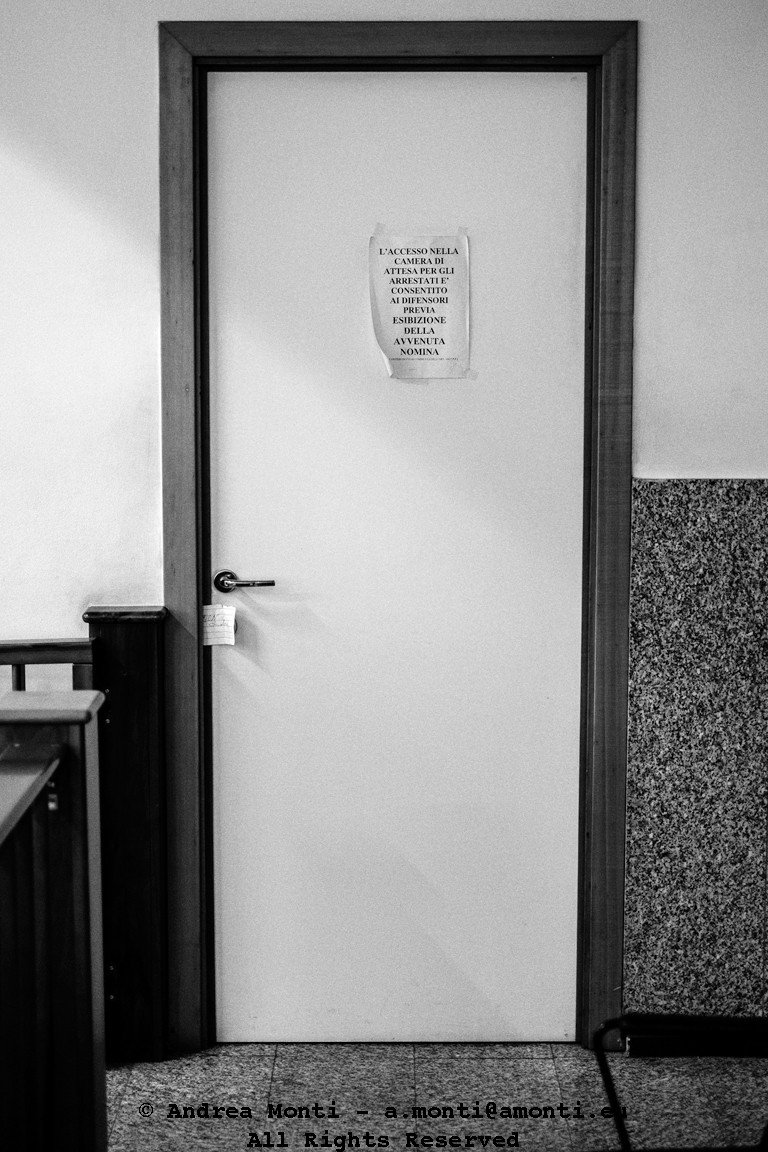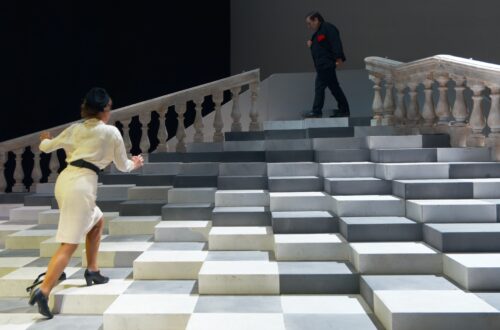
Arrested Behind the Door
Photographing in the criminal court of Rome is a peculiar experience — the air is thick with bureaucracy and human tension, yet most of it plays out behind closed doors. In this frame, the door is both a literal and symbolic barrier: clean, almost featureless, save for the taped sheet of paper outlining the rules of entry. It is stark in its message: access to the waiting room for the arrested is only permitted to lawyers, and only upon proof of formal appointment. Everything else — the people, their stories, their anxiety — remains hidden.
From a compositional standpoint, I kept the framing tight and frontal. The geometry of the doorway, with its wooden trim and neutral wall tones, becomes the main subject. The positioning is deliberate: the door is centred but not perfectly symmetrical, with the bench and desk edges intruding into the frame from the left. This adds context without overcomplicating the scene — you feel you are in an institutional space, but the anonymity of the door dominates.
Technically, the photograph works because of the restraint in exposure. The tonal balance between the white door, the grey speckled wall on the right, and the darker wooden structure on the left keeps the eye moving, while the note’s crisp black type anchors attention at the centre. Shot in black and white, the image avoids the distraction of colour and instead leans into texture — the grain of the printout paper, the slight wear on the door, the polished hardness of the granite wall.
The lighting, flat and bureaucratic, is in fact part of the subject. It’s the sort of fluorescent overhead wash that offers no drama, no shadow play, no romantic contrast — which is exactly why it feels true to the environment. In post-processing, I resisted the temptation to deepen blacks or boost contrast. The almost clinical tonality serves the scene: there’s no embellishment here, just the quiet, sterile reality of waiting for the wheels of justice to turn.
It’s a photograph that says very little — and in doing so, says quite a lot.




